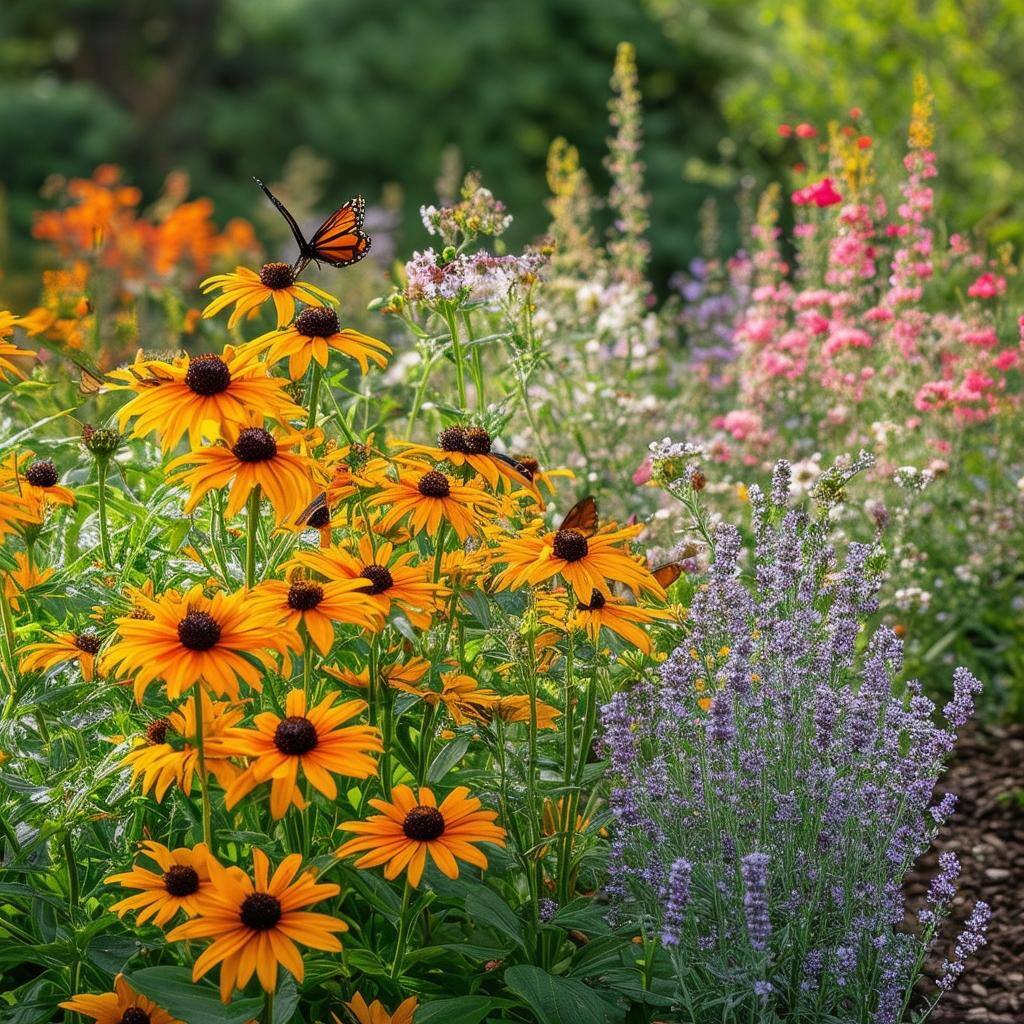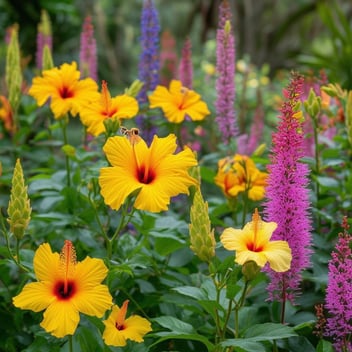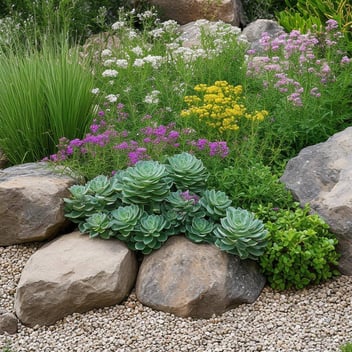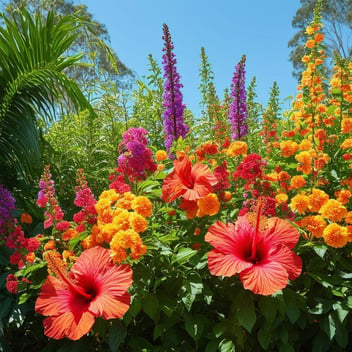Heat-Resistant Perennials for Year-Round Color
Introduction
Cultivating a garden that remains vibrant throughout the year, especially in regions prone to high temperatures, requires selecting perennials that can withstand heat while providing continuous color. These resilient plants not only enhance the aesthetic appeal of your landscape but also reduce maintenance efforts, as they are adapted to thrive in challenging climates.
Understanding Heat-Resistant Perennials
Heat-resistant perennials are plants that can endure prolonged exposure to high temperatures without compromising their growth or flowering capabilities. These plants have evolved mechanisms such as deep root systems, reduced leaf surface area, and efficient water usage to survive and flourish in hot conditions.
Top Heat-Resistant Perennials for Continuous Color
-
Yarrow (Achillea millefolium)
Yarrow is a tough perennial that thrives in heat and dry conditions. Its feathery leaves and brightly colored flowers add a splash of color to any garden. You'll love how low-maintenance it is. It can easily survive with minimal watering and care. Plus, yarrow attracts beneficial pollinators like butterflies and bees to your garden.
-
Blanket Flower (Gaillardia spp.)
This sun-loving plant has flowers in solid and patterned yellow, orange, and red colors. Butterflies seek out the pollen, and birds love eating seeds from the spent flowers. The extensive flowering time of these plants fills a space with cheer all summer long. Blanket flowers grow well in containers or a flowerbed in areas of zones 3 through 10. They are not finicky about the soil and are highly drought-resistant. These easy-to-grow flowers have a mature height of 1 to 3 feet.
-
Russian Sage (Perovskia atriplicifolia)
Russian sage is a perennial that thrives in hot and dry conditions. It features silvery-gray stems and finely divided leaves, topped with spires of small, tubular, lavender-blue flowers. Blooming from mid-summer to autumn, it adds a misty, ethereal quality to the garden. This plant is also deer-resistant and attracts pollinators. It prefers full sun and well-drained soil, making it an excellent choice for xeriscaping.
-
Coneflower (Echinacea purpurea)
Coneflowers are hardy perennials known for their daisy-like flowers with raised centers, typically in shades of purple, pink, or white. They are heat and drought-tolerant, making them suitable for hot climates. Blooming from mid-summer to fall, coneflowers attract butterflies and bees, and their seeds provide food for birds in the winter. They thrive in full sun and well-drained soil.
-
Black-Eyed Susan (Rudbeckia hirta)
Black-eyed Susans are hardy perennials that thrive in full sun and well-drained soil. These cheerful plants produce bright yellow flowers with dark brown centers, typically blooming from midsummer to early fall. They are drought-tolerant once established and attract pollinators like bees and butterflies. Deadheading spent flowers can encourage continuous blooming.
Designing a Heat-Resistant Perennial Garden
-
Site Selection: Choose a location that receives ample sunlight, as most heat-resistant perennials thrive in full sun.
-
Soil Preparation: Ensure the soil is well-draining. Amend heavy clay or sandy soils with organic matter to improve fertility and moisture retention.
-
Plant Grouping: Group plants with similar water and light requirements together to facilitate efficient irrigation and care.
-
Succession Planting: Select a variety of perennials with staggered blooming periods to maintain continuous color throughout the year.
Maintenance Tips for Heat-Resistant Perennials
-
Watering: While these perennials are drought-tolerant, regular watering during establishment and extreme drought conditions will promote optimal growth.
-
Mulching: Apply a layer of organic mulch around the base of plants to retain soil moisture, suppress weeds, and regulate soil temperature.
-
Pruning: Deadhead spent flowers to encourage reblooming and maintain a tidy appearance. Cut back plants in late fall or early spring to promote vigorous new growth.
Conclusion
Incorporating heat-resistant perennials into your garden design ensures a vibrant and dynamic landscape that withstands high temperatures. By selecting a diverse array of species with varying bloom times and colors, you can enjoy year-round interest and reduce the need for intensive maintenance. Embrace the resilience and beauty of these perennials to create a sustainable and captivating garden sanctuary.




